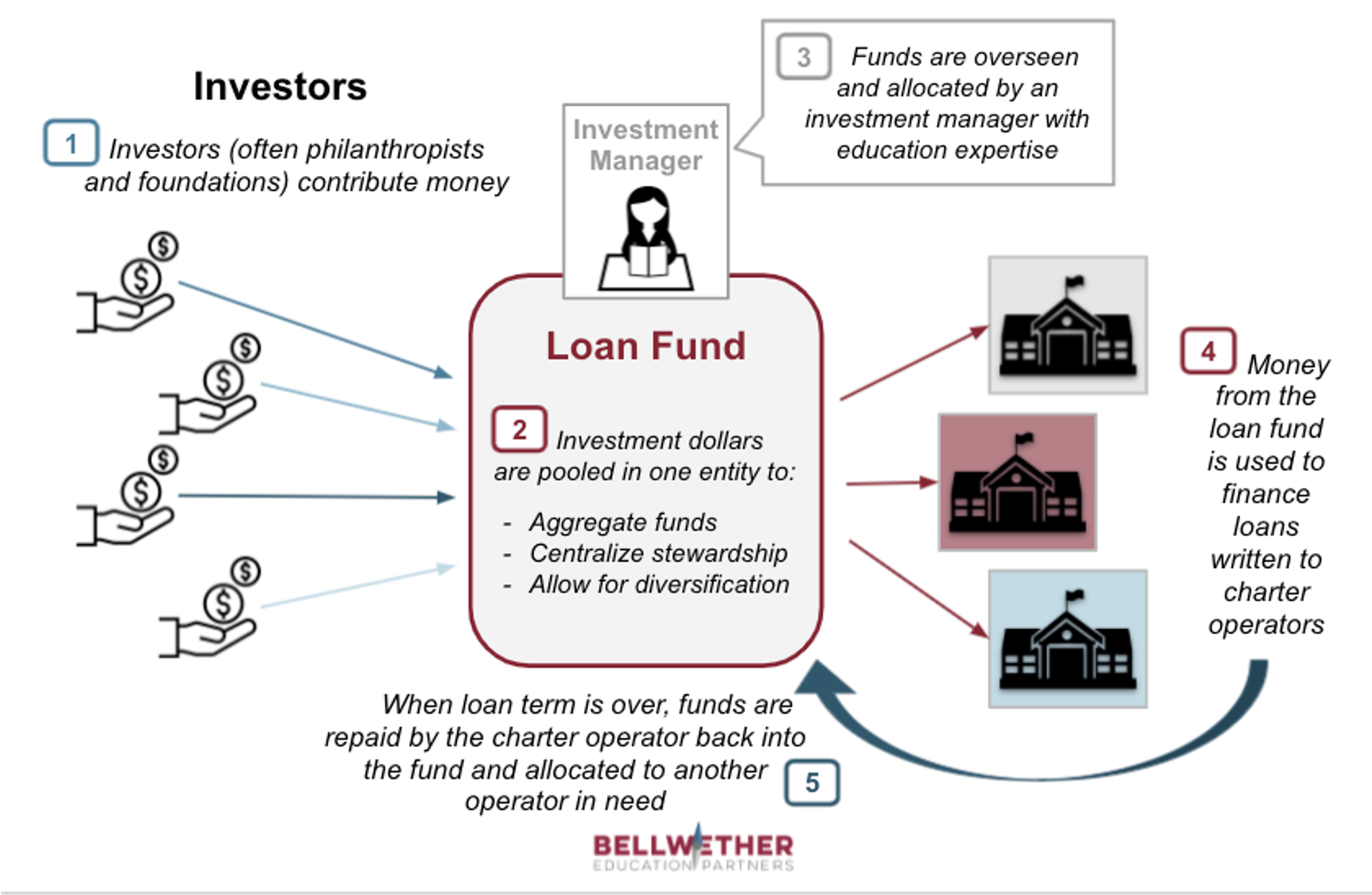
Photo courtesy of Yan Krukov for Pexels
As the Biden administration’s historic infusion of federal education funds are spent in states, coupled with a potential $1 trillion bipartisan infrastructure package making its way through Congress — a package that could include money for K-12 building safety and technology upgrades — we must ensure that charter school facilities are included in the policy debate. This concludes the “Infrastructure Insights: Financing Charter School Facilities” weeklong series, where Bellwether Education Partners shared insights into a range of issues facing charter school facilities.
Charter school loan funds are more affordable ways for charter leaders to pay for a new facility without diverting funds away from the things that matter most: educating and serving underserved students. But they can be complex. That’s why I’ve done the leg work and can share key findings to help you understand options available for your charter school.
What is a charter school loan fund?
A charter school loan fund is created when an investment manager pools together a pot of money from people who have excess cash and are looking for ways to invest it. These low-interest, short-term loans offer temporary financing during a time when a traditional lender would not extend credit to a new entity. Loan funds such as these exist in many sectors outside education (e.g. residential and commercial real estate and start-up companies, among others).
How are loan funds specifically used in the charter sector?
A charter school loan fund helps new or growing charter schools finance the rental, purchase, or construction of a school building. Traditional lenders often don’t extend credit to a new or expanding charter operator because these schools haven’t yet demonstrated viability through meeting enrollment targets, proving financial sustainability, or reaching academic success. Other investors might not have the industry expertise to understand if a charter school is a good investment.
People with excess funds they want to invest, including philanthropic entities, will turn to a charter school loan fund investment manager, who then uses their background in the education sector — and knowledge of the challenges facing charter leaders — to act as a steward of the money. This trusted professional writes loans to several charter schools, often providing these loans at lower interest rates than other options available in the market. Like any loan, charters must pay back these funds within the term of their contract (this varies by fund and can range anywhere from one to 30 years; many funds trend toward a five-year repayment term). After this time, a charter will have a stronger track record and lower risk profile, enabling them to secure loans from traditional lenders who are now willing to play ball and extend credit to the school.
Do different kinds of charter school loan funds exist?
Yes. Here are a few examples,* though it is worth mentioning that this isn’t an exhaustive list:
- The Facilities Investment Fund: National focus, loans that cover 90% of a facility’s value.
- The Facility Fund: National focus, small-value loans that absorb losses and bring other lenders to the table.
- Colorado Charter Facility Solution: Regional focus, small-value loans that absorb losses and bring other lenders to the table.
Across all of these funds, one common theme emerges: the willingness to lend at subsidized interest rates. The combination of the power of philanthropy, short-term investment timelines, and the investment manager’s education expertise enable lenders to extend a charter operator credit at below-market rates while the operator builds a track record of success and creditworthiness.
This sounds great. How can I access one of these charter school loan funds?
To get you started, we recommend a few practical tips:
1. Know your options: Research facilities funds that are actively looking for schools to finance; some of them may even be in your own backyard.
2. Understand your needs: Before speaking to a loan fund professional, define your charter facility needs with key inputs such as: enrollment, master schedule, specials and amenities offered, etc. Think ahead about what compromises you’re willing to make and which you’re not.
- Have you built a financial model to understand how much debt you’ll require and the interest rate you can afford? If so, are the assumptions in your model realistic based on what the investment manager has seen?
3. Ask Questions: Many of these funds are willing to provide technical assistance to navigate this process. Know what questions to ask to tap into the knowledge of these investment managers.
- Where are real estate prices in your target market?
- Are suitable school facilities readily available or is the market highly competitive?
- What have other charter leaders recently paid to secure a building?
If you’d like more information on how to navigate the charter facilities financing process, or want to collaborate with our team, email contactus@bellwether.org. And if you missed any installments of our “Infrastructure Insights: Financing Charter School Facilities” series, click here.
(*Some organizations listed include past or present clients or funders of Bellwether.)

